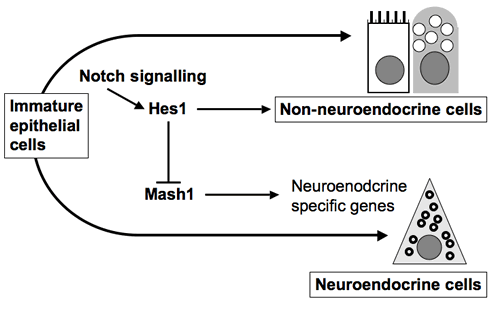

Department of Pathology and Experimental Medicine
Great Departments / Cancer Medicine
| Assistant Professor | SATO Yonosuke |
|---|
Pathology is a science to study disease processes from the points of cause of the disease (etiology), mechanisms of its development (pathogenesis), its morphological changes and the clinical significances of the morphological changes. Thus, pathology is a bridging discipline involving both basic and clinical medical sciences. Our research themes include 1) molecular mechanisms of cell differentiation of epithelial cells (especially lung cells) and cancer cells with focusing on transcriptional regulation and cell signal transduction pathways, 2) molecular mechanisms of modulation of cell differentiation by regulatory molecules for cell proliferation and vice versa, 3) mechanisms of epithelial morphogenesis and pathological tissue regeneration (tissue remodeling) after tissue injury, 4) identification, characterization and pathological significance of epithelial, mesenchymal, and cancer stem cells. For accomplishment of these studies, we have analyzed experimental animals including gene-targeted mice, fetal mouse tissues, cultured tissue and cells including human cancer cells, human tissue obtained at surgery by virtues of various morphological methods including electron microscopy and fluorescent immunohistochmemistry, flowcytometry, functional analyses by gene transfection and/or gene expression inhibition studies, RNA-Seq and CHIP-Seq analyses. Besides studies of basic medical sciences, we are trying to develop easy and reliable diagnostic techniques with combination of classical pathological methods and molecular techniques.

Cell fate determination of fetal airway epithelium regulated by the basic helix-loop-helix network. Neuroendocrine phenotypes depend on Mash1. In non-neuroendocrine cells, Hes1, which is activated by Notch signaling, represses mash1 expression and activation, and maintains the cells to be nonneuroendocrine.










